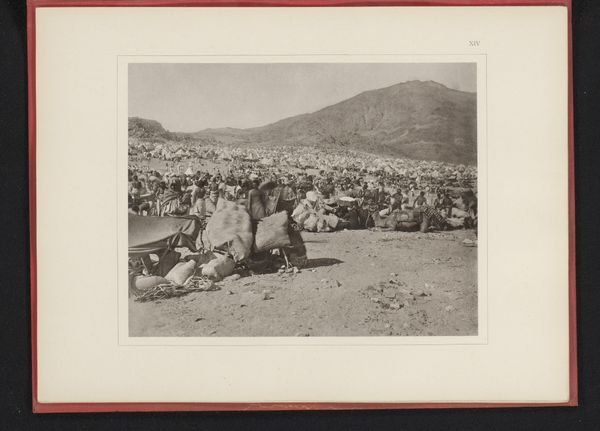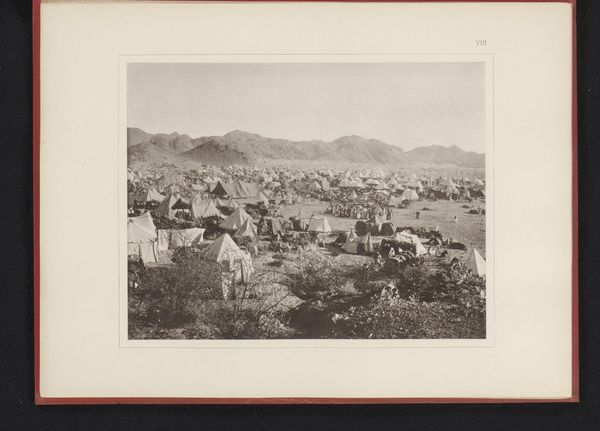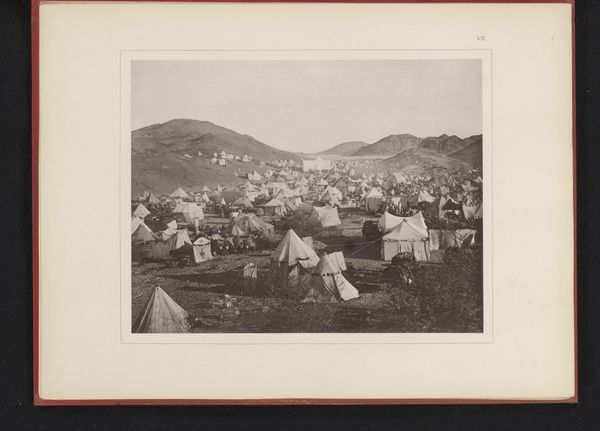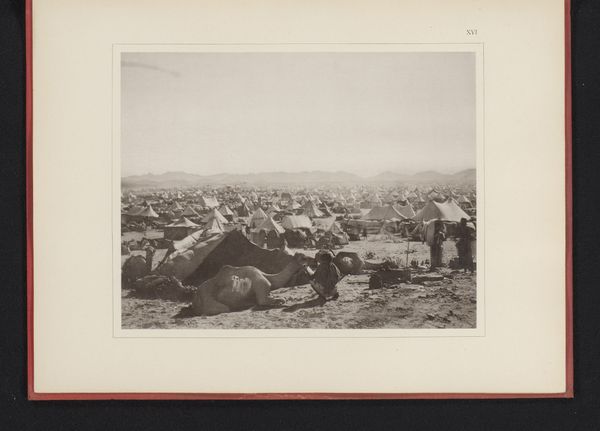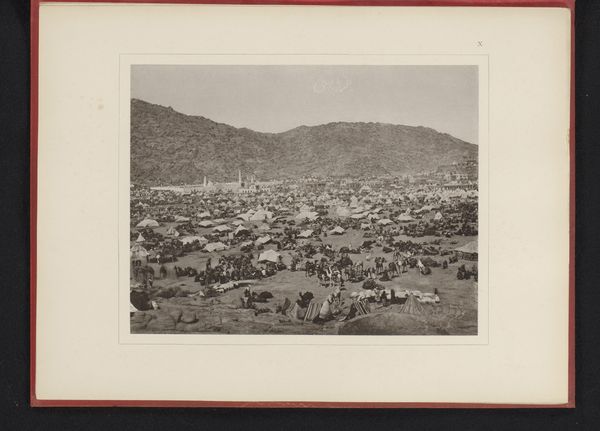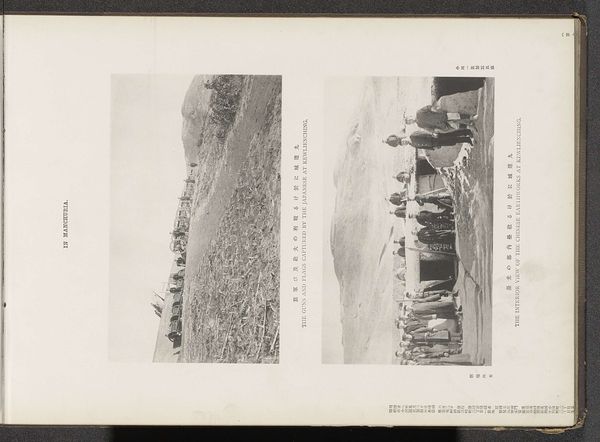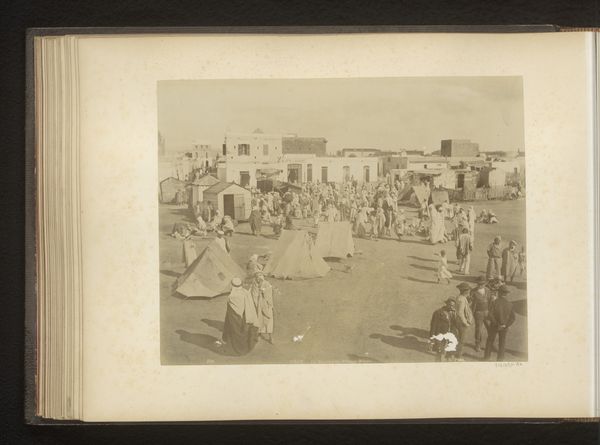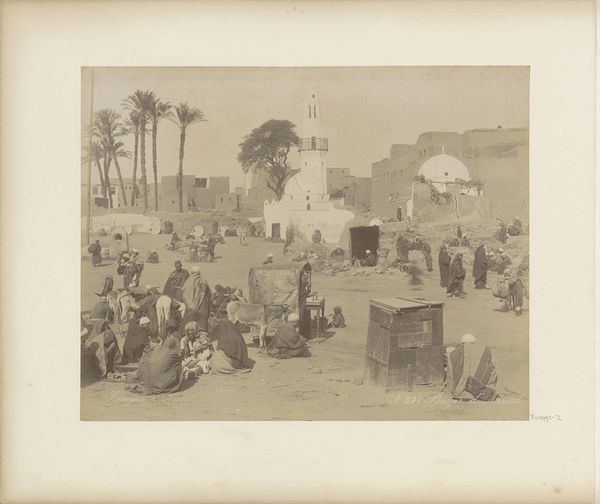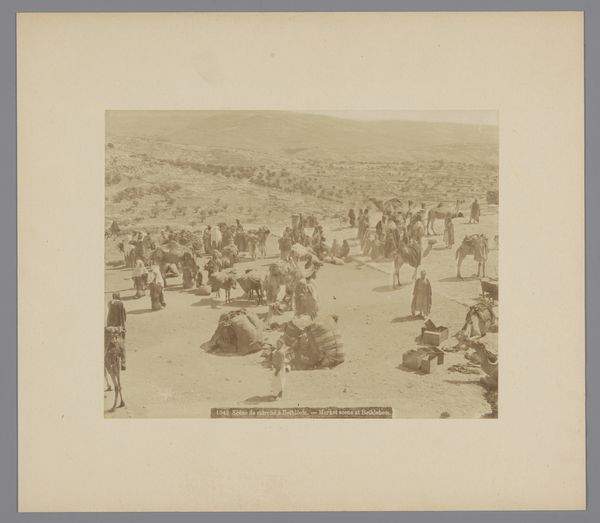
photography, gelatin-silver-print
#
landscape
#
natural light
#
photography
#
orientalism
#
gelatin-silver-print
#
islamic-art
Dimensions: height 270 mm, width 360 mm
Copyright: Rijks Museum: Open Domain
Editor: Here we have Abd al-Ghaffar's gelatin silver print from 1889, titled "Pilgrim Camp on the Plain of Arafat during the Hajj." It depicts a vast encampment; the composition is stark, yet evokes a sense of bustling community and deep faith. What do you see in this work? Curator: This photograph offers us a fascinating window into the intersection of faith, travel, and representation during a period of intense colonial engagement with the Middle East. It's essential to acknowledge the orientalist gaze often inherent in such depictions. How does al-Ghaffar, presumably an insider, negotiate these visual dynamics in portraying such a significant religious pilgrimage? Editor: That's a great question. I hadn't considered the photographer's positionality. It makes me wonder about the choices in what to include in the frame, and what to leave out. Curator: Exactly. Consider how photography, as a relatively new medium at the time, was deployed to document, categorize, and ultimately exert power. This image can serve as an entry point into discussions about the agency of those being represented, and how they navigated the act of being seen. It is critical to analyse how it reinforces, or potentially subverts, prevailing western narratives of the 'Orient'. Editor: So, it's not just a simple record, but a complex layering of perspectives and power dynamics. It shifts my focus from just seeing the tents to thinking about the politics of representation. Curator: Precisely. It invites us to explore how faith, identity, and representation are intertwined within broader socio-political frameworks, specifically relating to gender, race, and class at this historical moment. What stories do we need to amplify to counteract biased colonial interpretations of the period? Editor: I see it differently now. I realize that behind the apparent simplicity, there’s a lot of scope for deconstructing the colonial gaze. Thank you! Curator: It is imperative to question and explore diverse intersectional readings surrounding an artwork's creation and interpretation. This type of critical thinking strengthens art history's impact.
Comments
No comments
Be the first to comment and join the conversation on the ultimate creative platform.

